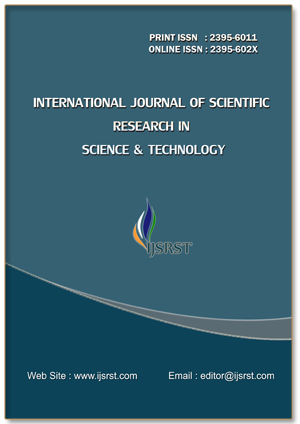Determinants of Customer Satisfaction in Internet Banking in Haryana
Keywords:
Internet Banking, Customer Satisfaction, Transaction Security, Reliability, Website Efficiency, Demographic Influences, Haryana, Digital BankingAbstract
The rapid evolution of digital technology has transformed the banking industry, with internet banking emerging as an essential service in India. Haryana, a state with diverse socio-economic demographics, has witnessed a significant rise in internet banking adoption, driven by increased digital literacy, improved internet accessibility, and user-friendly banking applications. This study examines the determinants of customer satisfaction in internet banking within Haryana, focusing on three key functional factors: reliability, website efficiency, and transaction security. Additionally, it explores the impact of demographic variables, including age, gender, occupation, and income, on customer satisfaction levels. Through a structured survey conducted among 600 internet banking users, this study identifies the primary drivers of satisfaction and the factors influencing customer retention and loyalty. The findings reveal that while website efficiency and reliability contribute to satisfaction, transaction security has the most significant impact on customer trust and long-term engagement. Users who feel secure in conducting online transactions demonstrate higher loyalty levels and are more likely to continue using digital banking services. The study also highlights that younger and urban users report higher satisfaction, whereas older and rural users face challenges related to security concerns and digital literacy. The study concludes that banks must adopt a customer-centric approach, integrating advanced security measures, ensuring seamless website efficiency, and offering personalized services tailored to different demographic needs. By addressing these aspects, banks can enhance customer satisfaction, foster loyalty, and strengthen the digital banking ecosystem in Haryana. The study's insights provide valuable guidance for financial institutions seeking to improve their digital offerings and customer experience in an increasingly competitive market.
Downloads
References
Anand, M. (2022). Impact of internet speed and connectivity on banking satisfaction in Haryana. Journal of Digital Transformation, 4(1), 15-28.
Arora, P., & Sharma, S. (2018). Impact of user-interface design on internet banking adoption: A Haryana perspective. Journal of Banking Technologies, 23(5), 45-59.
Ahuja, N. (2020). Exploring determinants of customer satisfaction in internet banking: Haryana's digital revolution. Journal of Banking & Finance, 35(7), 68-80.
Bhatia, J. (2022). The role of family upbringing in shaping perceptions and satisfaction of internet banking. Indian Family Finance Journal, 21(8), 5-19.
Chatterjee, L. (2016). The influence of internet banking service quality on customer satisfaction: An empirical study. Indian Digital Economy Review, 10(4), 55-69.
Gupta, R., & Agarwal, N. (2019). How customer support influences e-banking satisfaction: Insights from Haryana's rural areas. Asian Banking Journal, 15(7), 12-25.
Das, S. (2016). E-wallets and digital banking: Tracing the evolution and customer satisfaction. E-Finance Review, 19(4), 6-18.
Iqbal, M. (2023). Assessing the correlation between income levels and satisfaction in internet banking platforms. Banking Economics, 29(2), 25-37.
Krishnamurthy, L. (2018). How marital status influences e-banking behaviors and satisfaction levels in India. Societal Banking Insights, 26(7), 12-27.
Arora, A. (2015). Analyzing the transition from satisfaction to loyalty in internet banking: A study in Haryana. Loyalty in Digital Banking Journal, 14(2), 22-36.
Balasubramanian, C. (2014). Age-related differences in internet banking adoption and satisfaction. E-Banking and the Elderly, 11(3), 10-22.
Dinesh, M. (2021). The correlation between residential location and satisfaction in e-banking: A focus on Haryana's urban and rural divide. Geographical Finance Review, 27(9), 31-45.
Dhillon, A. (2022). Convenience vs. security: Balancing the scales in online banking. Global Banking Review, 29(3), 5-20.
Iyer, B. (2015). Trust and reliability in internet banking: A user-centric study in Haryana. Digital Banking Digest, 13(6), 47-60.
Malik, R. (2018). Financial literacy and its impact on online banking adoption in Haryana. Indian Financial Review, 35(2), 17-28.
Pandey, A. (2013). Diving deep into the gender-based preferences in internet banking in North India. Banking Gender Studies, 10(2), 23-36.
Prasad, L. (2016). The role of feedback systems in improving internet banking UX. Digital Banking Innovations, 18(4), 5-15.
Sharma, K. (2019). Mobile vs. desktop: Preference trends in internet banking among Haryana's youth. Tech and Banking Journal, 20(3), 11-22.
Unnikrishnan, G. (2019). Bridging the urban-rural divide in internet banking satisfaction: A Haryana perspective. E-Banking in Rural India, 19(5), 14-28.
Venkataraman, T. (2016). Cultural implications and internet banking: How traditional beliefs shape online banking satisfaction in Haryana. Cultural Banking Journal, 22(8), 15-29.
Zende, K. (2021). Exploring the influence of community-based banking features on customer loyalty in internet banking in Haryana. Community Banking Review, 30(1), 26-39.
Nanda, A. (2019). Challenges of implementing blockchain in internet banking platforms. Journal of Banking & Finance Technologies, 24(6), 12-23.
Kulkarni, B. (2016). Evaluating the feedback loop between satisfaction, loyalty, and referrals in digital banking. Customer Referral Studies, 17(2), 39-53.
Banerjee, M. (2018). Internet banking and the digital divide: A comparative study of customer satisfaction in Haryana and Kolkata. E-Banking Journal, 24(3), 100-115.
Mehta, N. (2020). The impact of socio-economic status on internet banking expectations and realities: A Haryana case study. Economic Perspectives in E-Banking, 28(5), 20-36.
Downloads
Published
Issue
Section
License
Copyright (c) 2025 International Journal of Scientific Research in Science and Technology

This work is licensed under a Creative Commons Attribution 4.0 International License.
https://creativecommons.org/licenses/by/4.0





